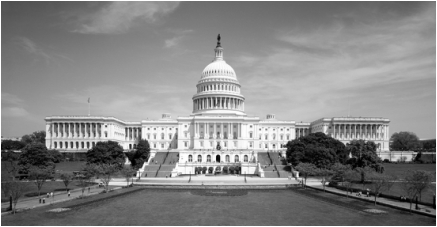The Old Days:
- Before the Industrial Revolution, we relied on the sun, burning wood or straw, the muscles of horse or the power of the wind in our sails.
The Steam Engine:
- Ramped up in the 17th and 18th Centuries, powered by coal, could do the work of dozens of horses, could power locomotives, factories and farms.
Hydroelectric Power:
- In 1881 the first hydroelectric plant was constructed in Appleton, WI. Henry Ford hired Thomas Edison to build a small hydro plant to power his home in MI while making cars.
NEPA
|
The History of Retail Energy Competition
|
1.) For most of the 20th Century homeowners, businesses and industrial manufacturers had only one choice when it came to purchasing electricity and natural gas for their homes, businesses and factories. That’s because policy makers had determined that it was more efficient and energy consumers would benefit from economies of scale, if the retail sales of electricity and natural gas were made by utilities with monopoly-protected service territories at regulated rates. Utilities were provided rates that guaranteed they recouped their investment and earned a reasonable profit as determined by state regulators.
3.) This arrangement worked well for the first half of the 20th Century. Energy prices declined, thanks in large part to economies of scale and ever-increasing demand. But in the second half of the 1900s, this “regulatory compact” began to break down. Wellhead regulation of natural gas removed incentives for companies to speculatively drill for natural gas, impacting supplies and prices. Federal law actually prohibited the use of natural gas for electricity production. And monopoly-protected utilities were unprepared for the price shocks caused by the oil embargoes of the 1970s. In a rush to move away from oil-fired power plants and build large nuclear power generating plants, massive cost overruns were passed along through regulated rates to electricity customers already reeling from rising prices.
|
2.) In fact, utilities had actually encouraged the establishment of monopoly price regulation. They noted it was economically inefficient for there to be competing sets of wires and pipes bringing electricity and natural gas to consumers, and price competition was making it increasingly difficult for utilities to make a profit. Under monopoly price regulation, utilities could keep their costs low because of economies of scale and dedicated infrastructure (wires and pipes). For electric utilities, the economies of scale were particularly applicable when it came to electricity generation facilities. Large protected electric service territories led to development of large power plants serving millions of customers.
4.) This occurred as leading economists were concluding the monopoly-protected price regulation was in and of itself inefficient and needlessly imposing costs on consumers. They argued that consumers would be better served if regulated industries were exposed to competitive forces provide strong incentives for businesses to be efficient and cut costs. Over time, competition, by way of energy deregulation, was injected into the trucking, oil and natural gas, telecommunications and airline industries, and the end of monopoly protections and price regulations resulted in billions of dollars in economic savings for U.S. consumers.
|
Opening Energy Markets to Competition
|
Beginning in the 1990s, the federal government acted to inject competition into markets for wholesale power production and bulk sales of electricity. At the same time, many states acted to end monopoly protections for retail sales of electricity and natural gas. Gradually, large competitive wholesale power markets overseen by large regional grid operators were enabled by federal regulation. Those successful competitive wholesale power markets and the introduction of energy deregulation of natural gas have provided a necessary foundation for successful competition at retail for electricity and natural gas.
|
Unfortunately, California was the first state in the country to open its retail electricity market to competition. Its market design, a result of stakeholder compromises, was severely flawed and resulted in a high-profile energy crisis in 2000 and 2001. This prompted several states that had adopted energy deregulation programs to either indefinitely delay implementation of retail competition or to actually re-regulated their retail electricity sectors.
Other states, however, quietly persisted with retail electric competition programs that benefited from better market structures (thanks in some part to the lessons learned from California’s spectacularly failed initial attempt at competition). In those states, competition has been extremely successful and customers are increasingly choosing to purchase from competitive retail suppliers.
Competition Today
|
As a result, today energy consumers in more than a dozen states benefit from retail energy competition, while consumers in the remaining states still only have one option – a monopoly utility provider – when it comes to purchasing electricity and natural gas.
The Retail Energy Supply Association is dedicated to preserving customer choice in those states that provide a competitive market structure, and is working to expand customer choice in other states where consumers’ retail energy options are limited. Because experience shows that retail competition results in better value for consumers and innovative products and services provided by competing customers more apt to meet consumers’ individual needs than a monopoly-protected utility company. |
Customer is in Control
|





